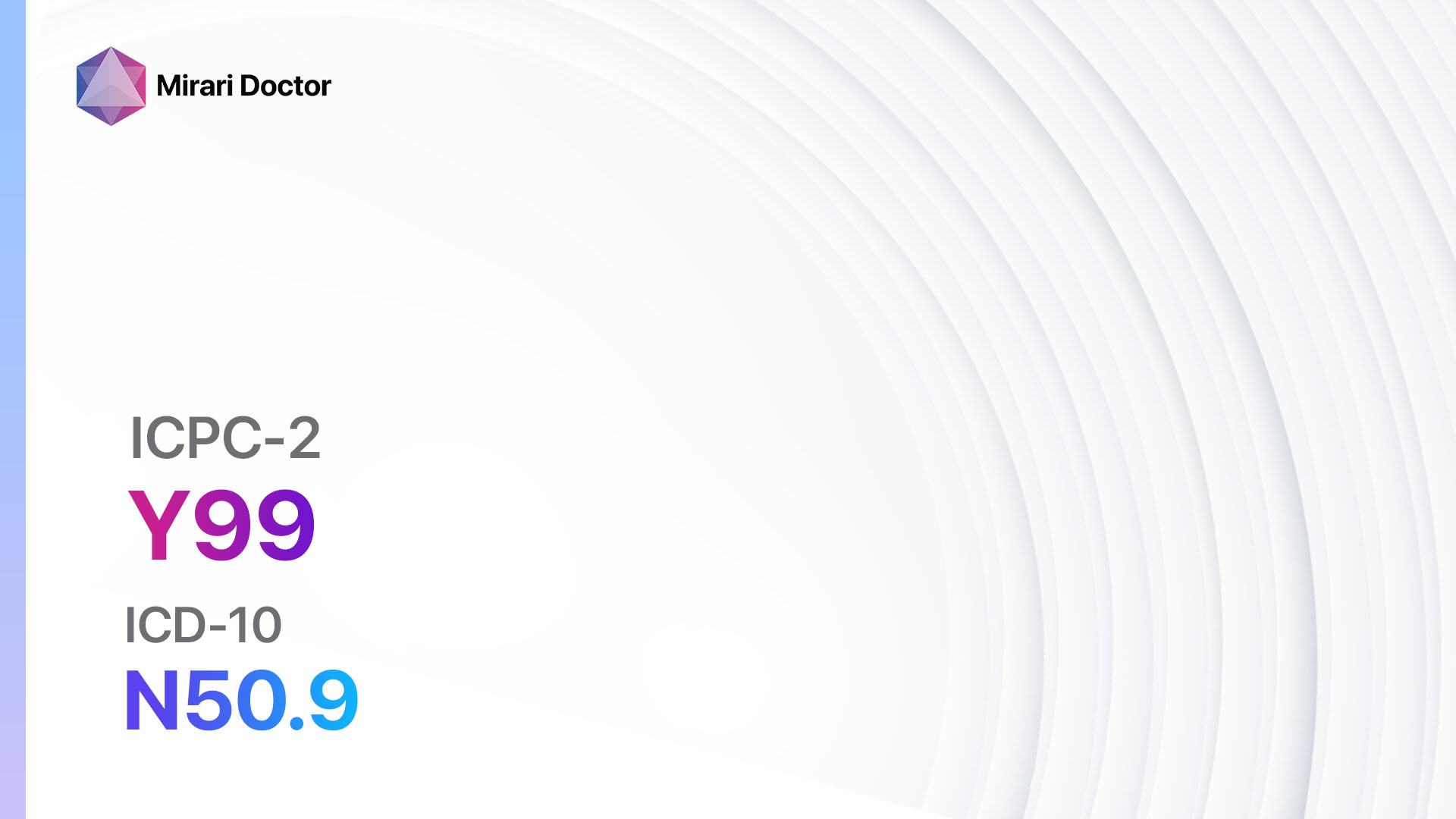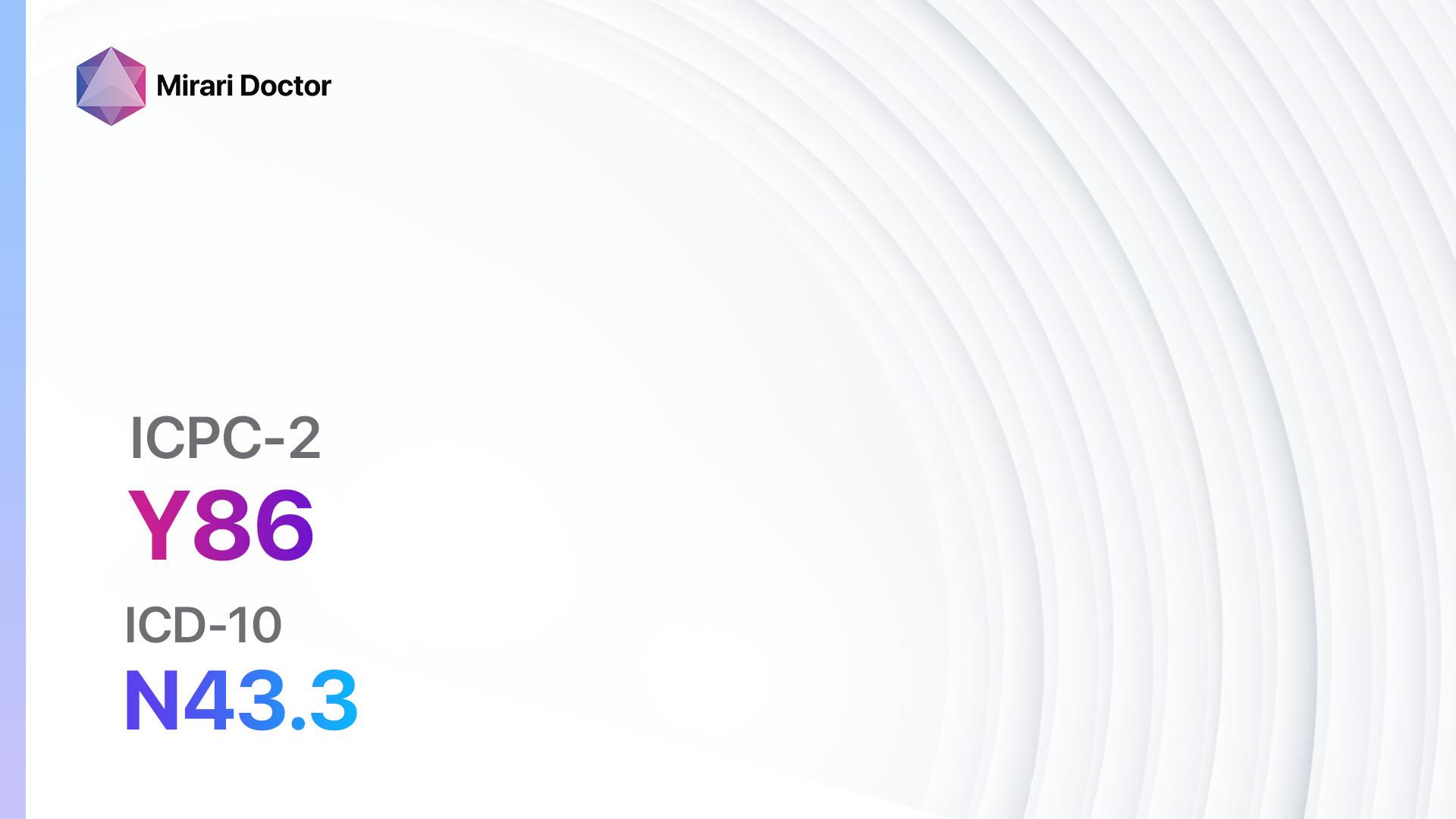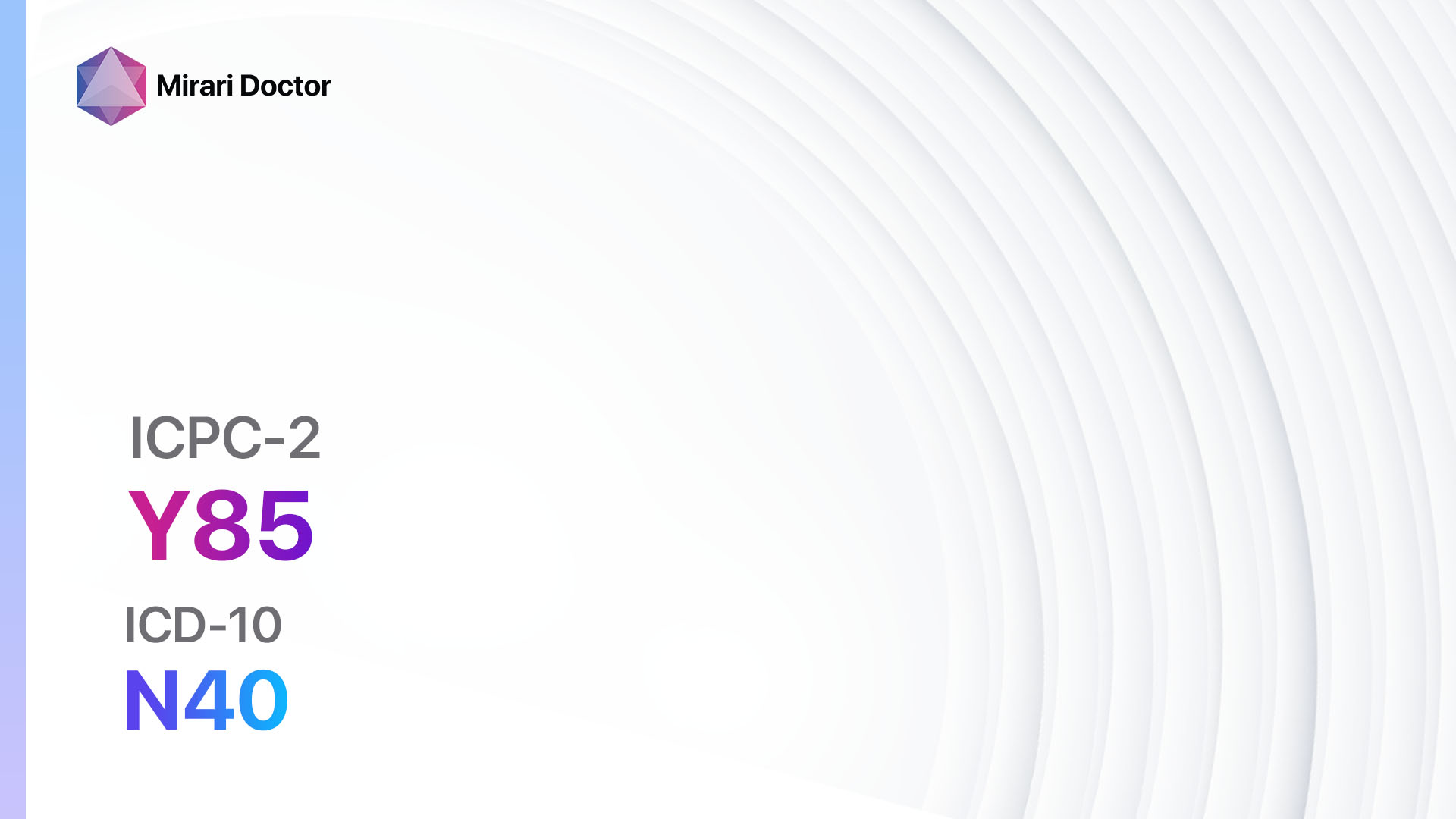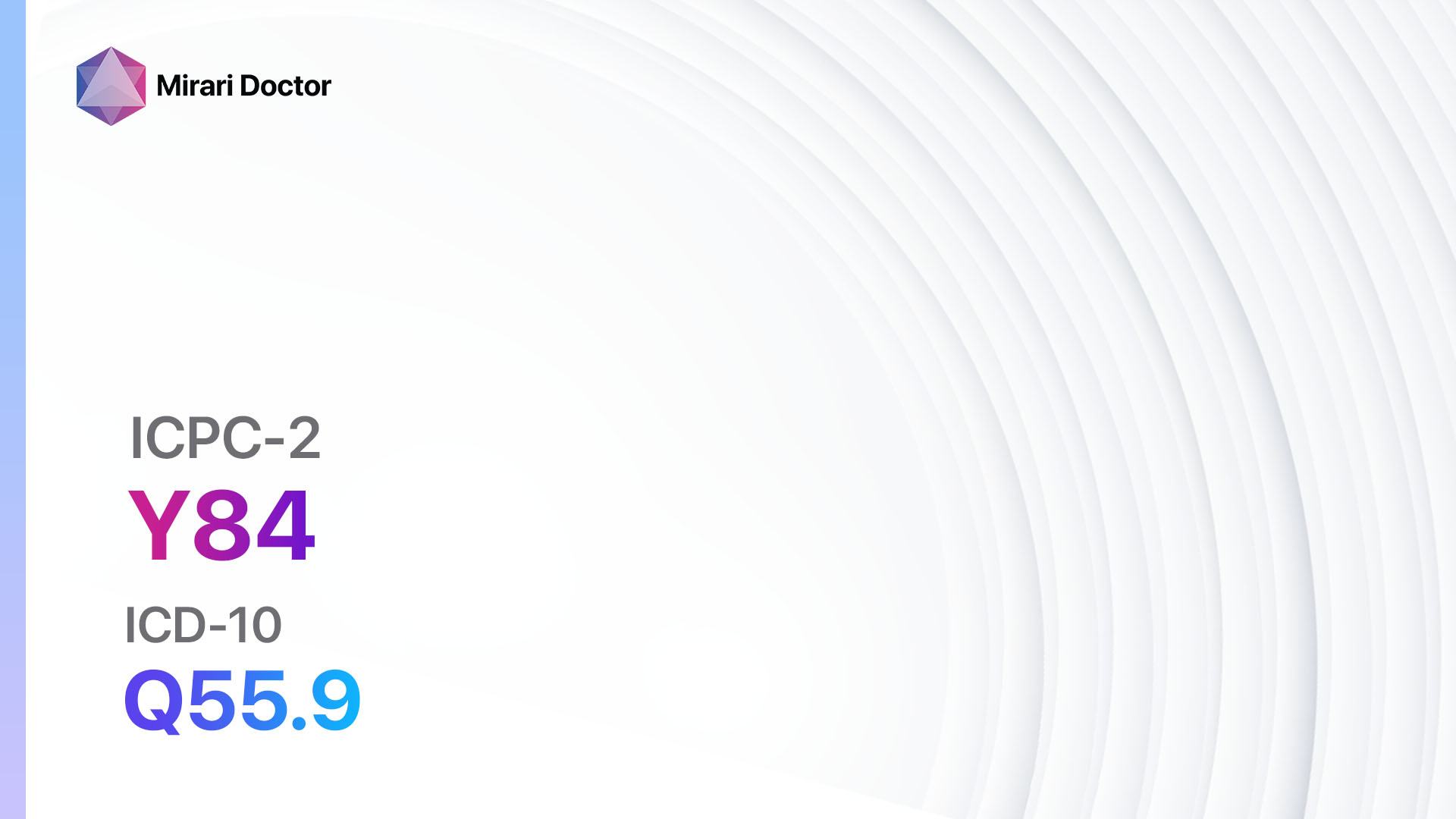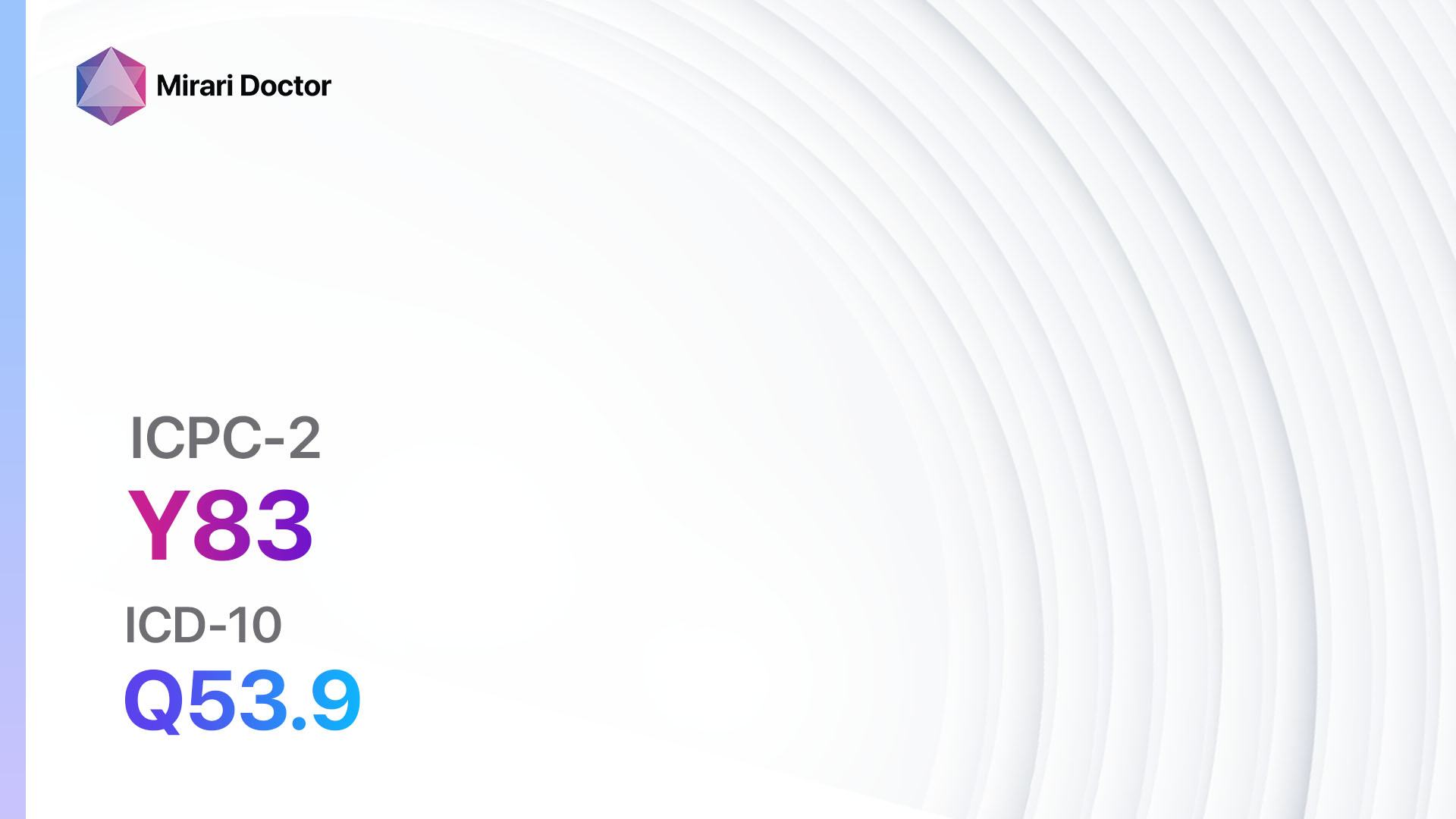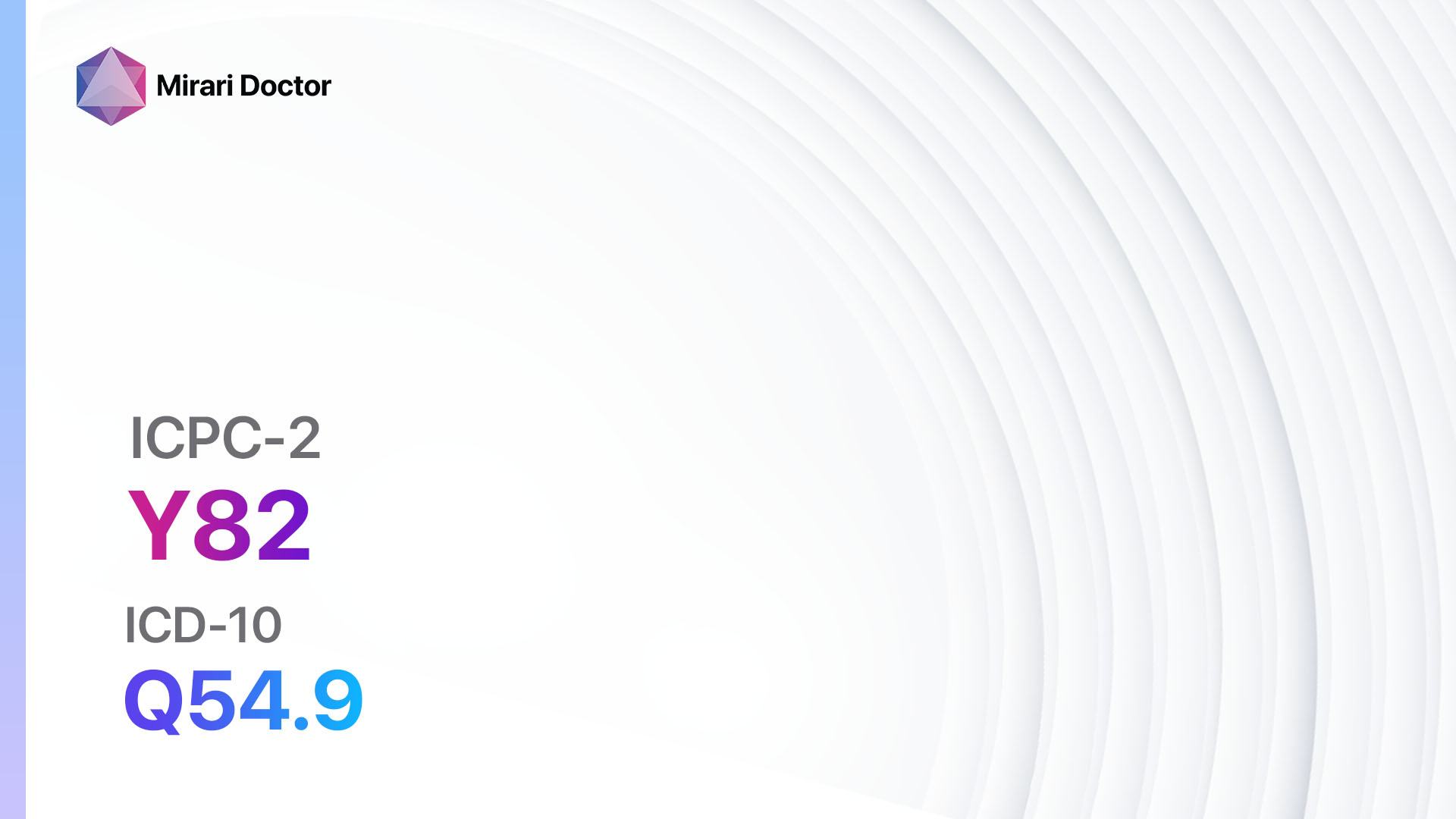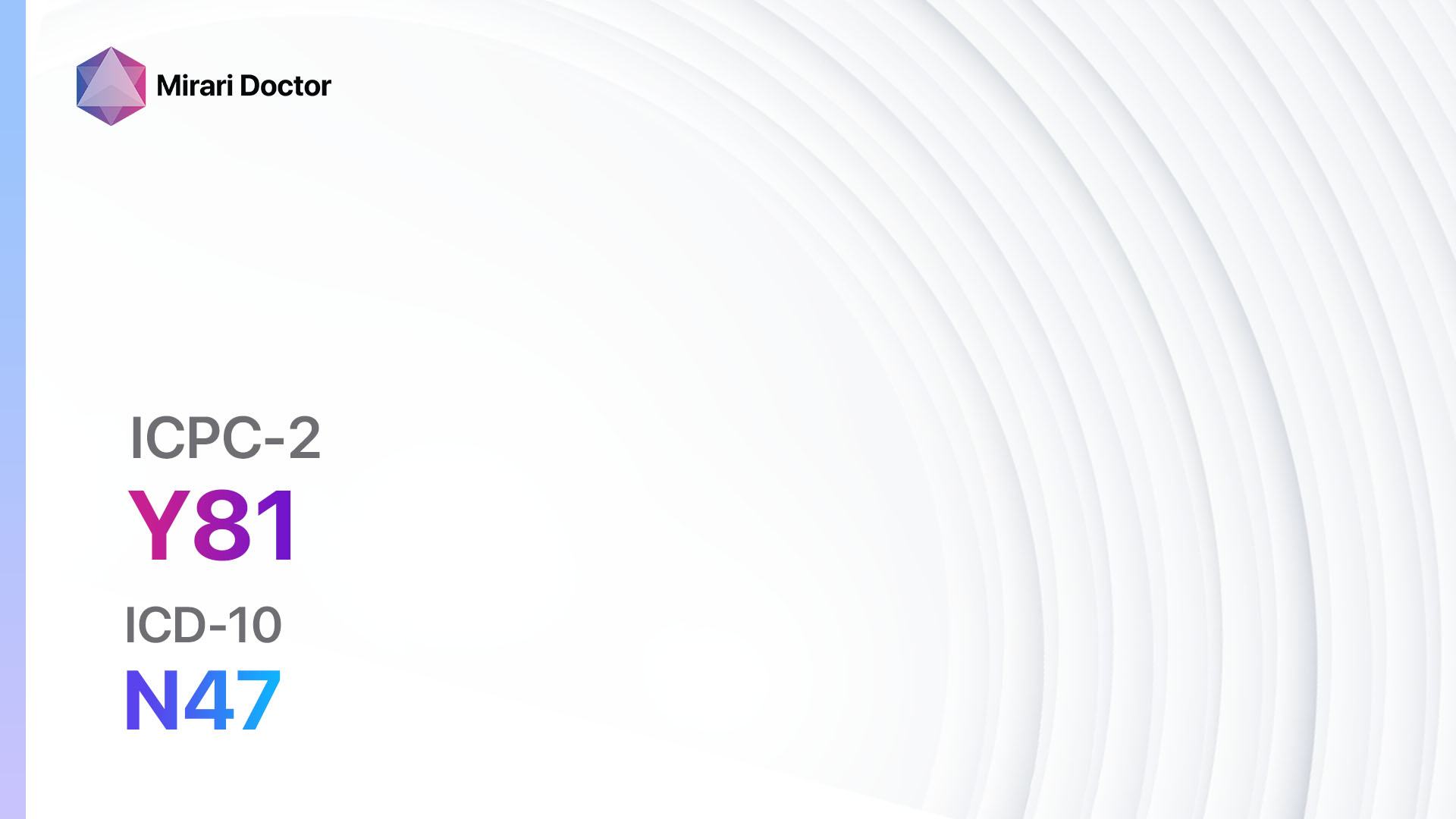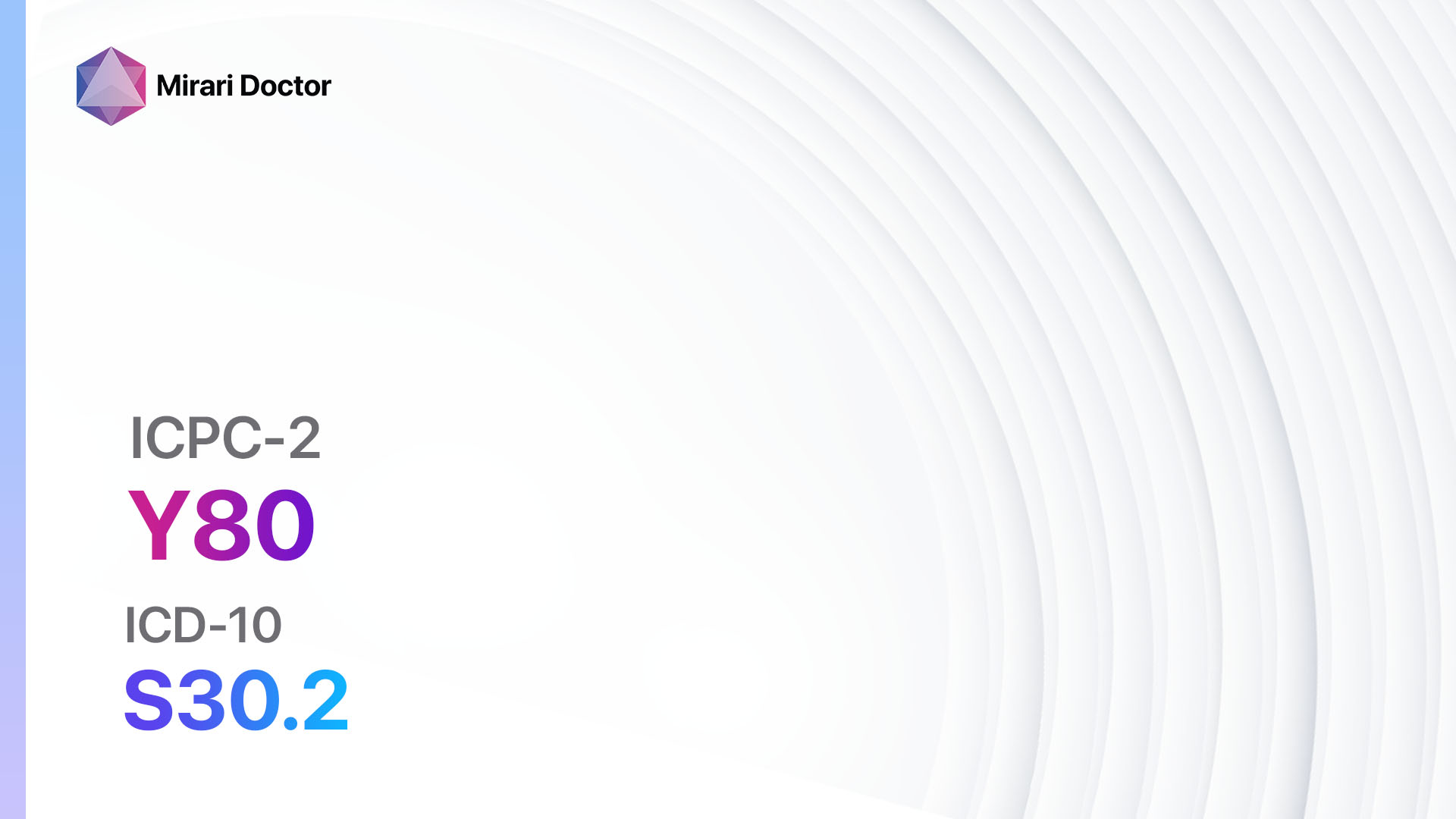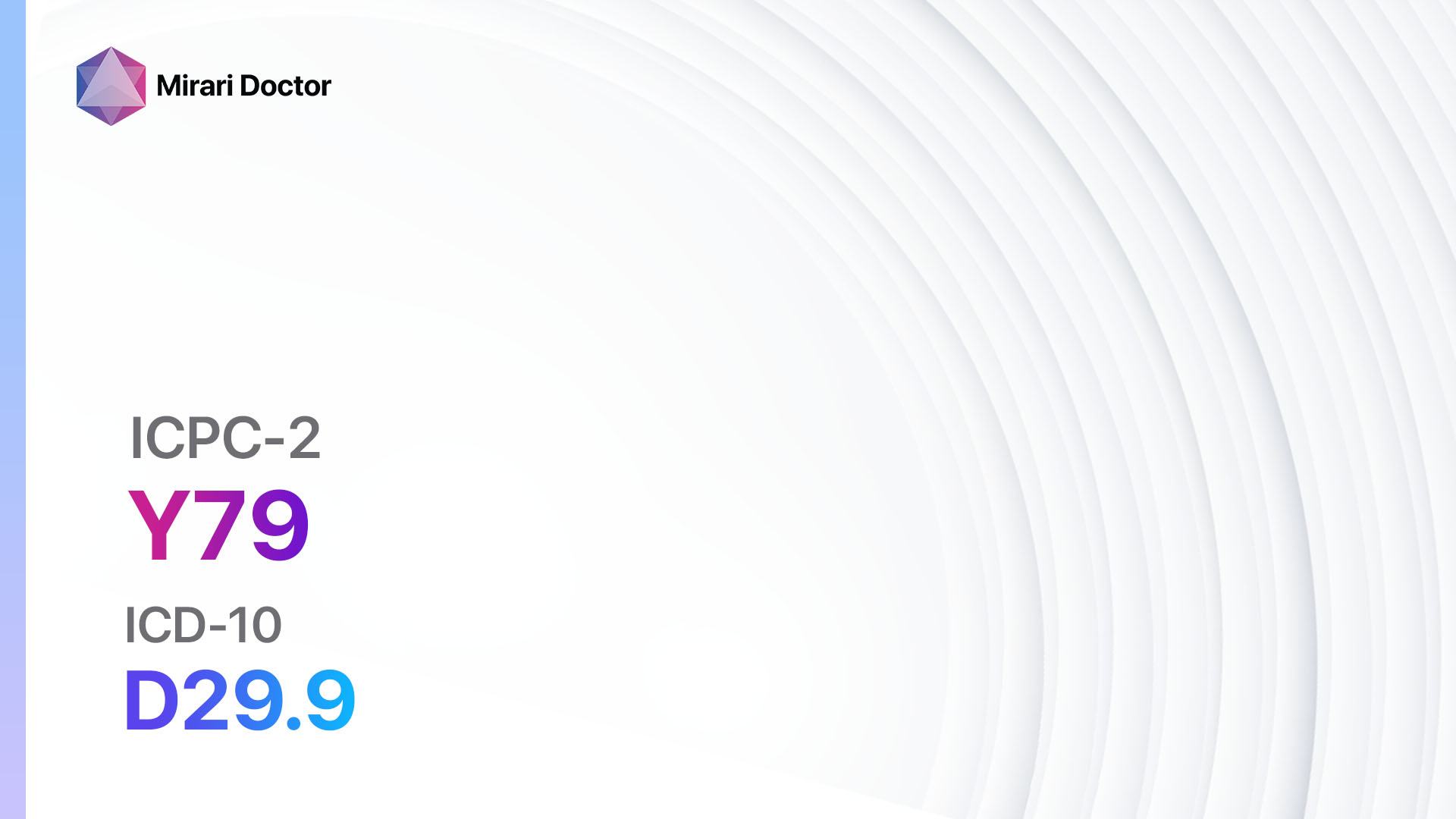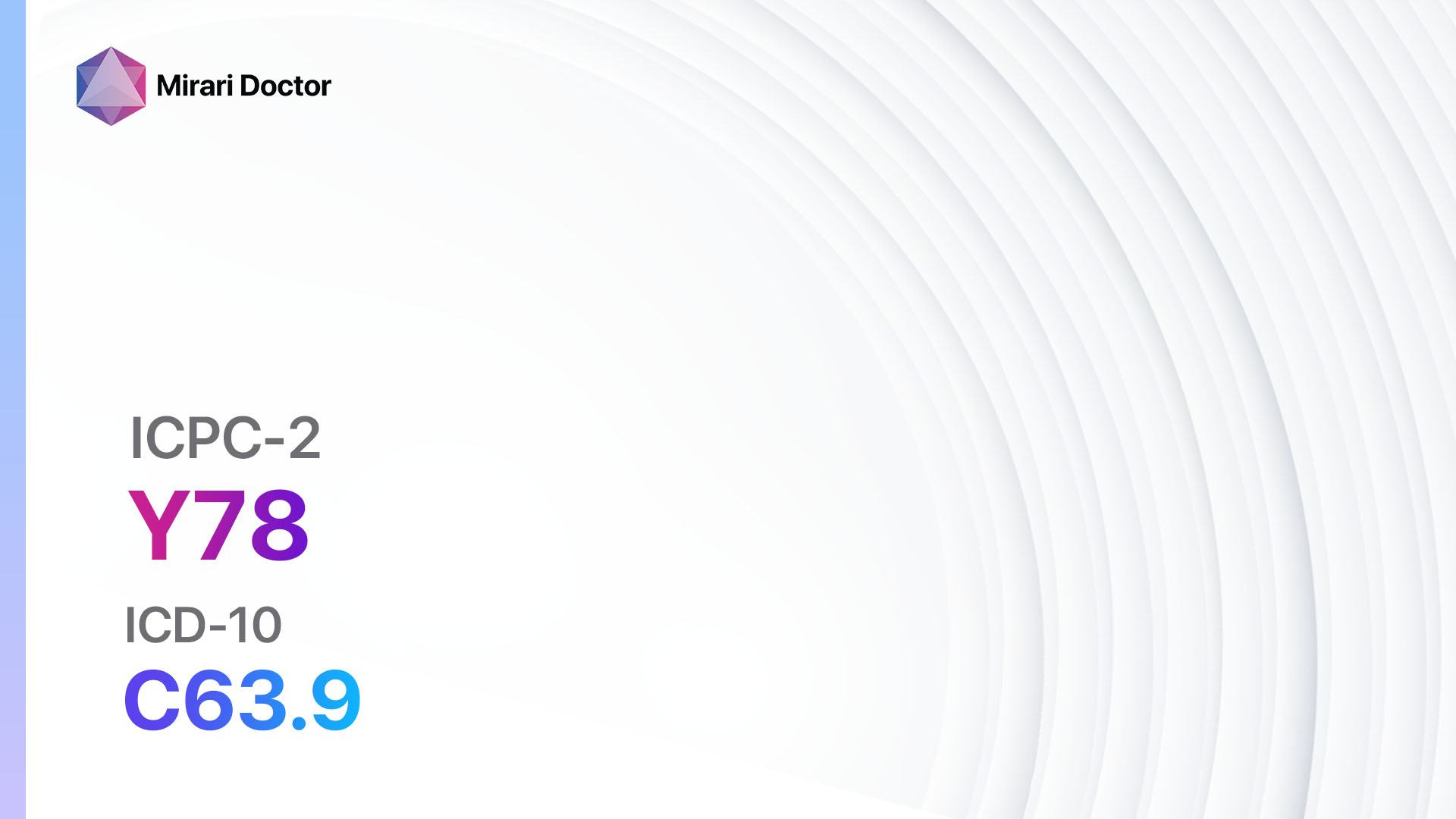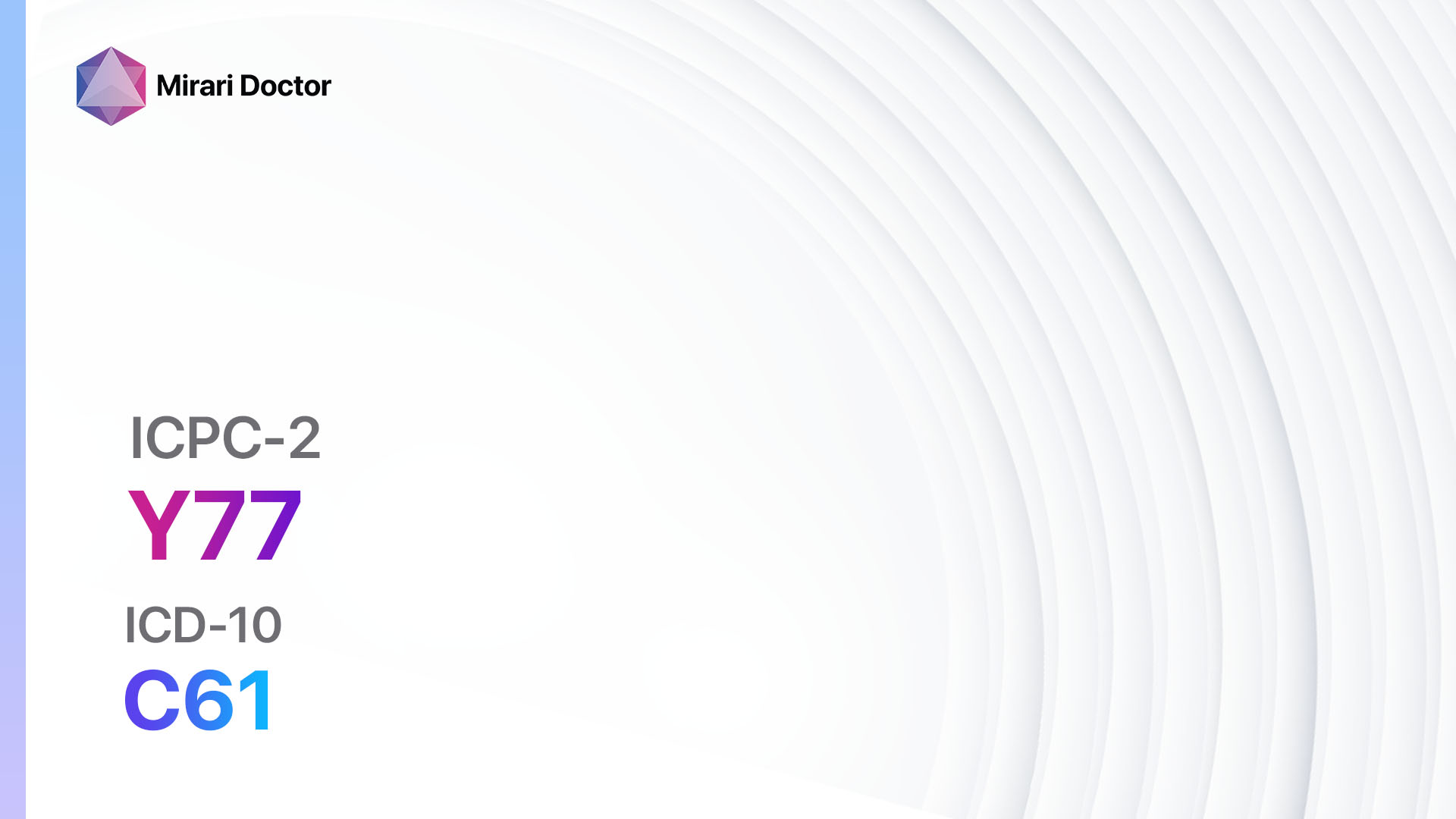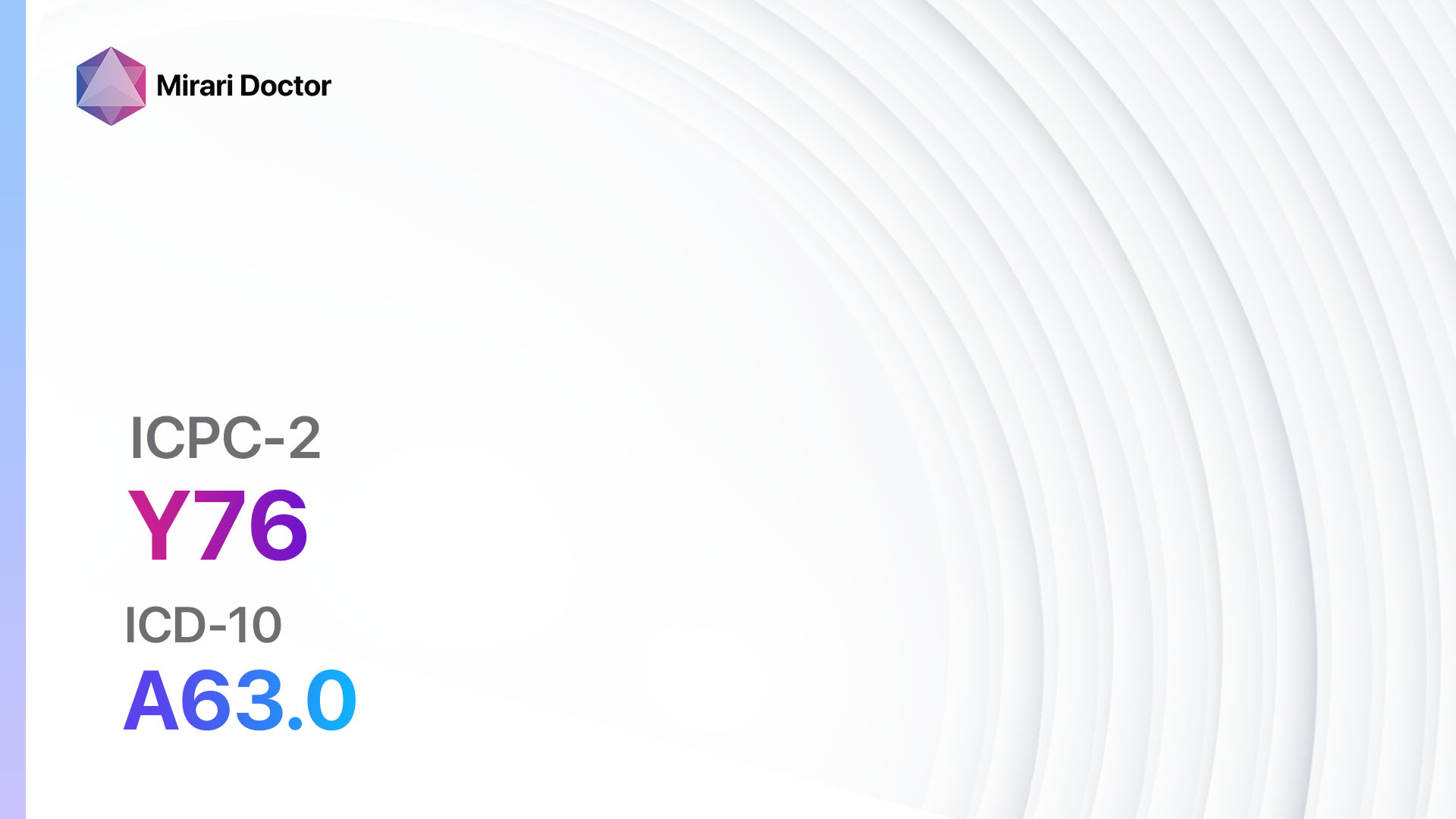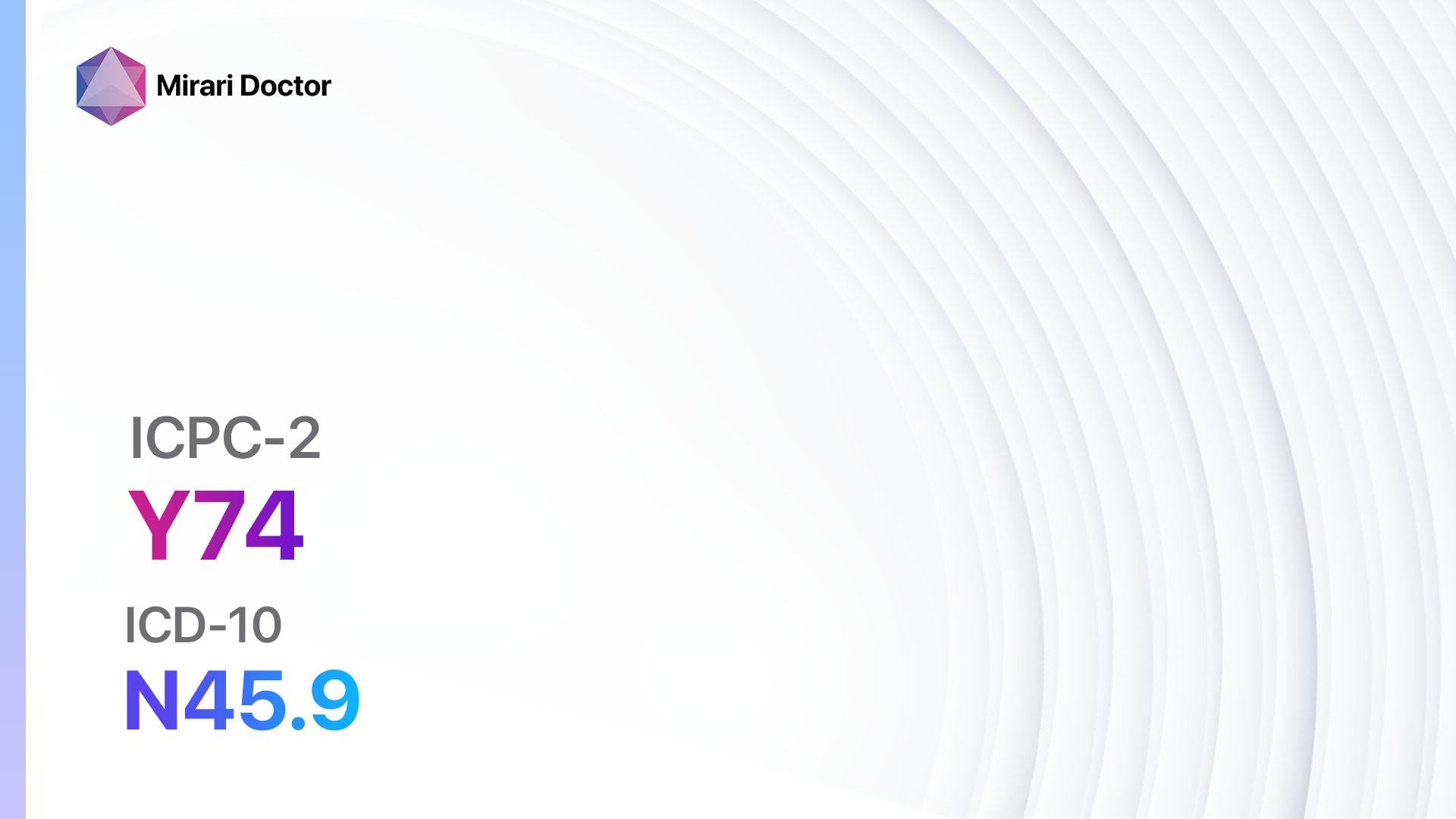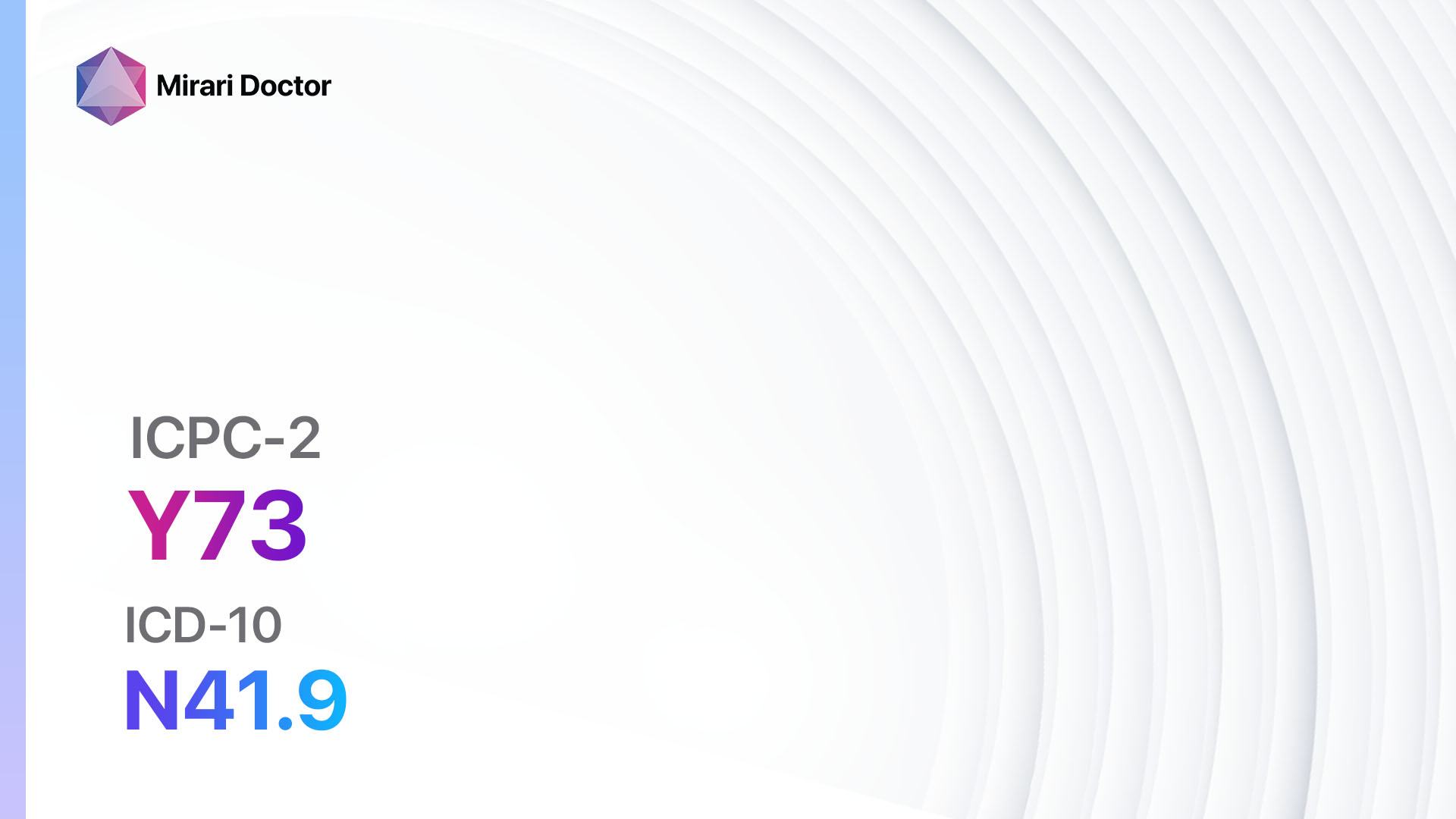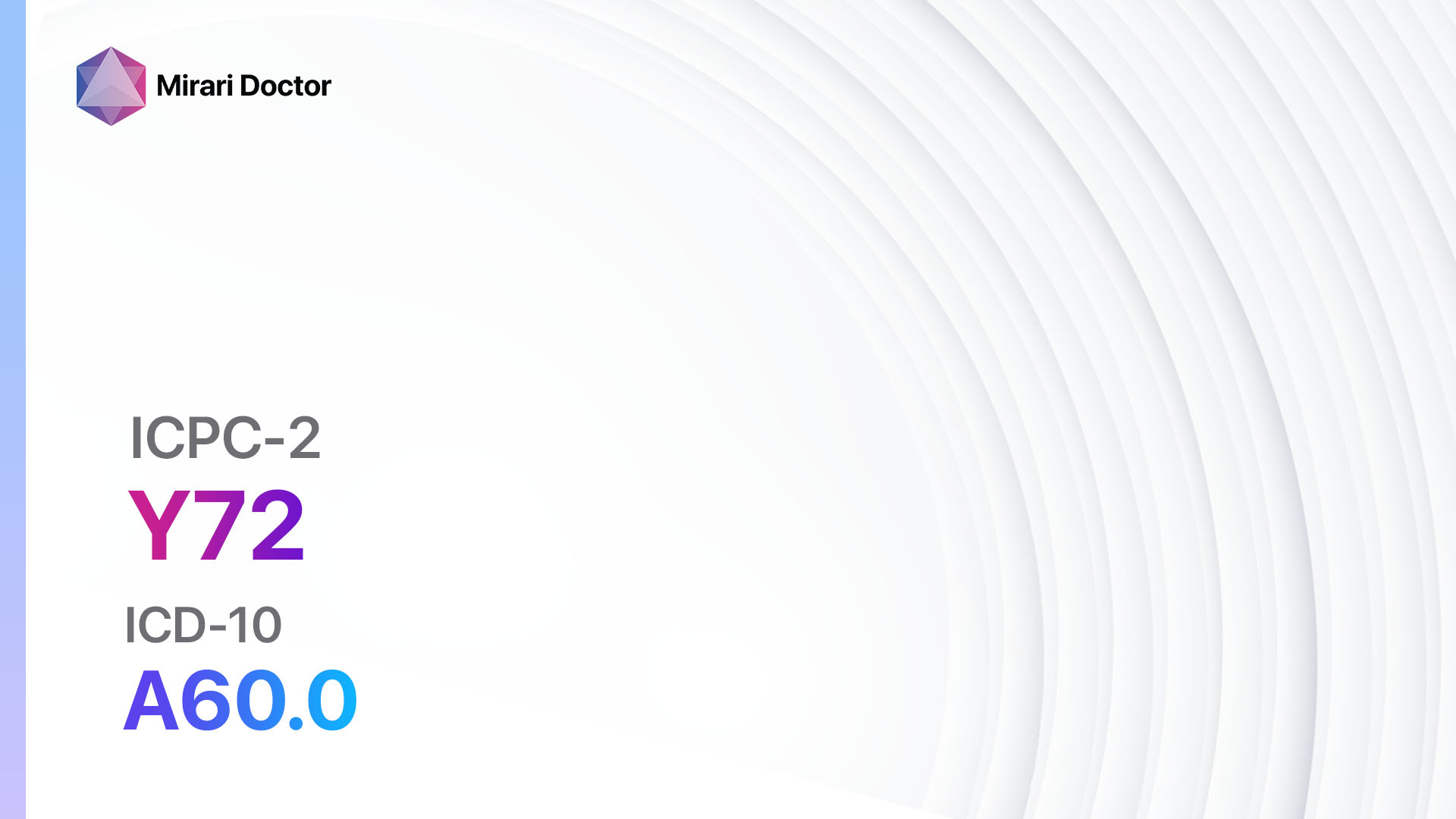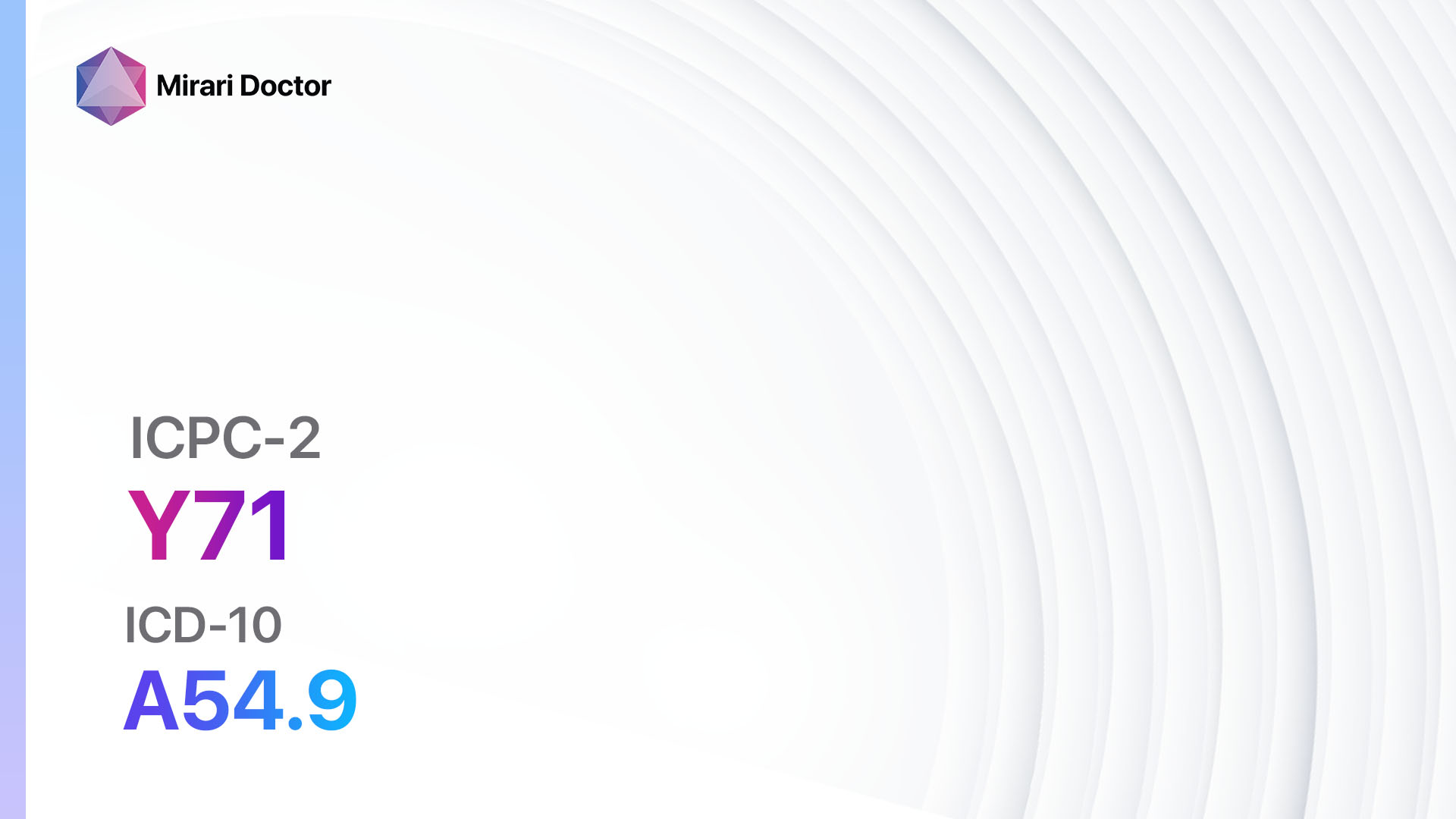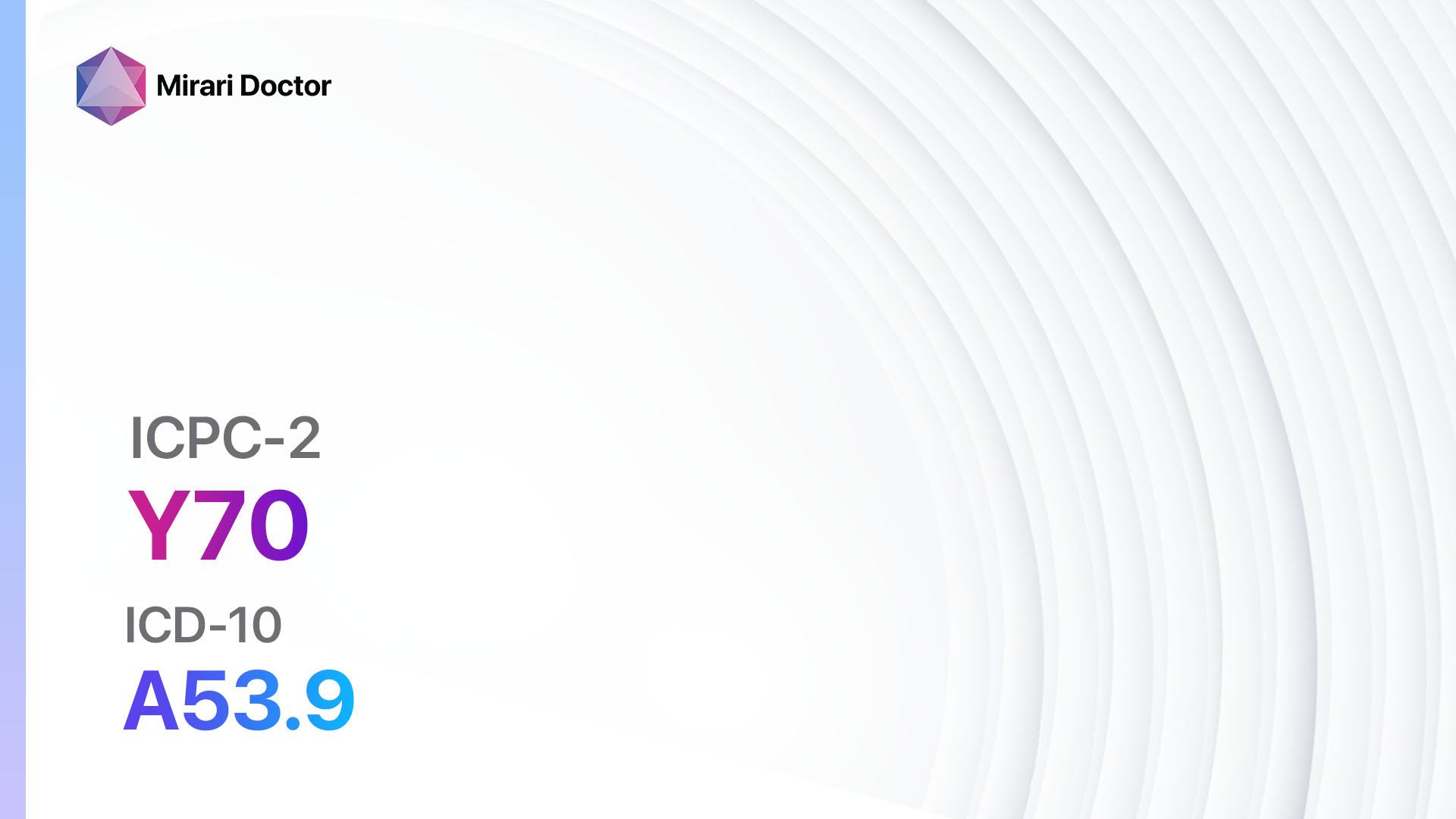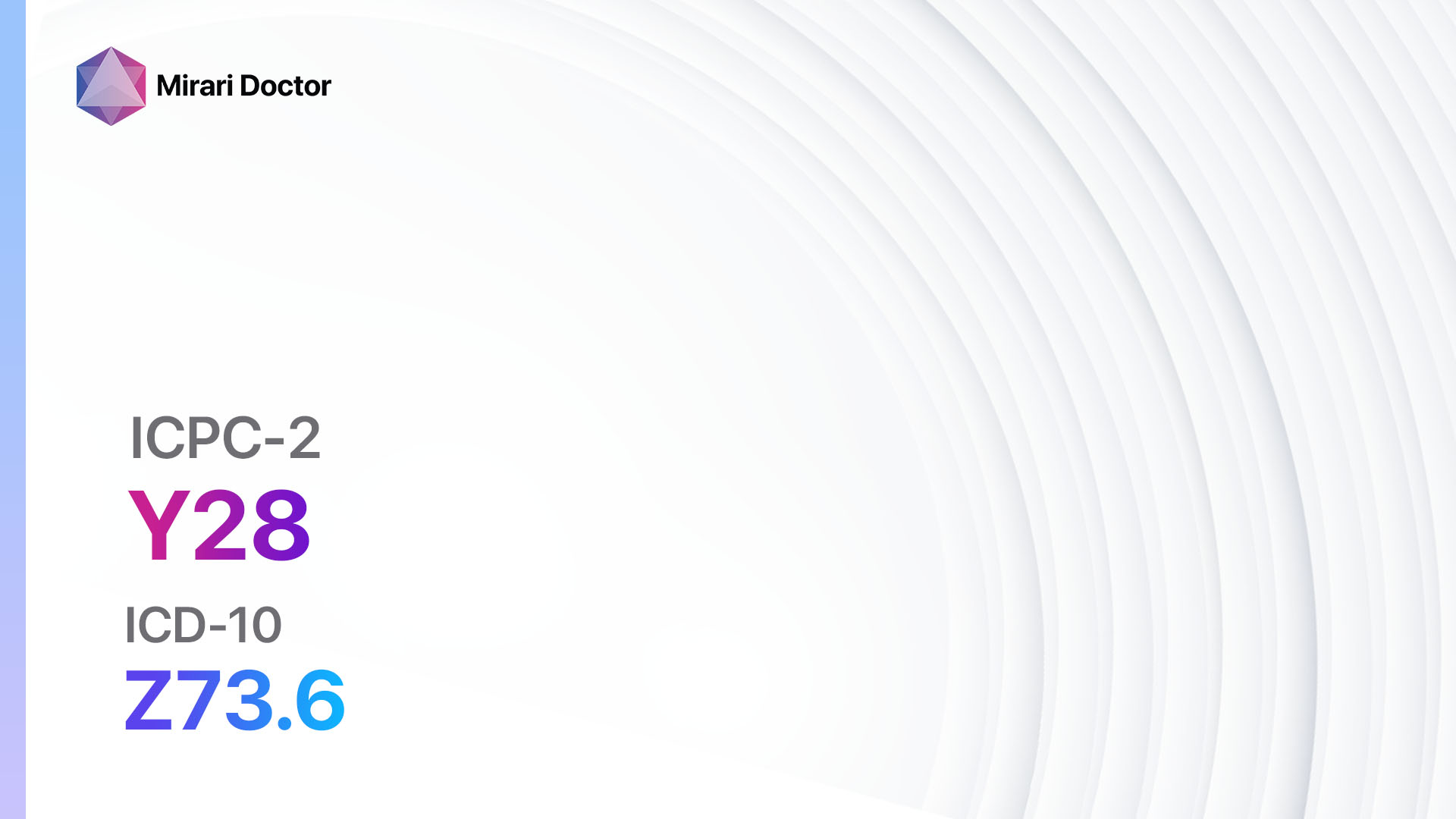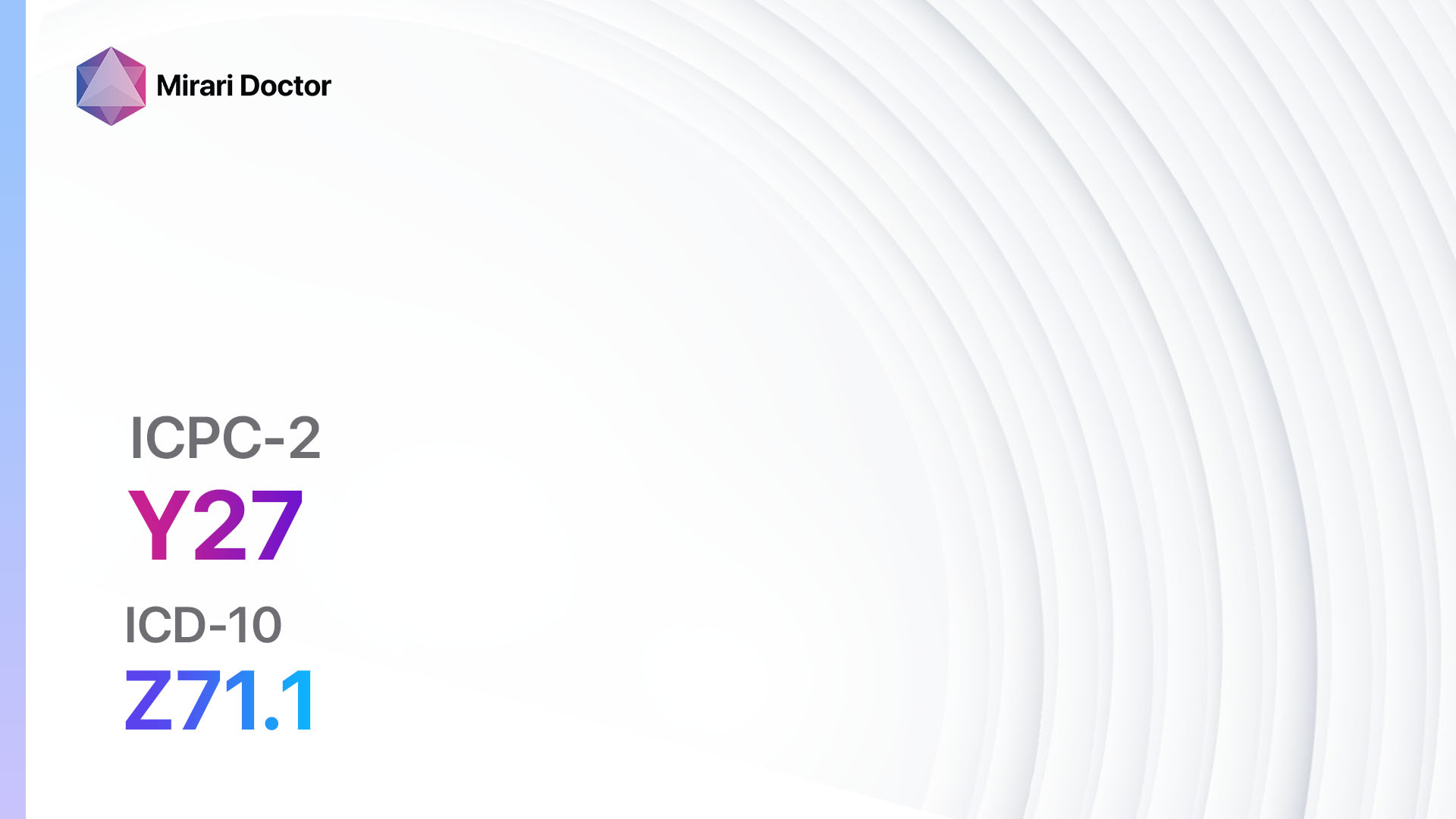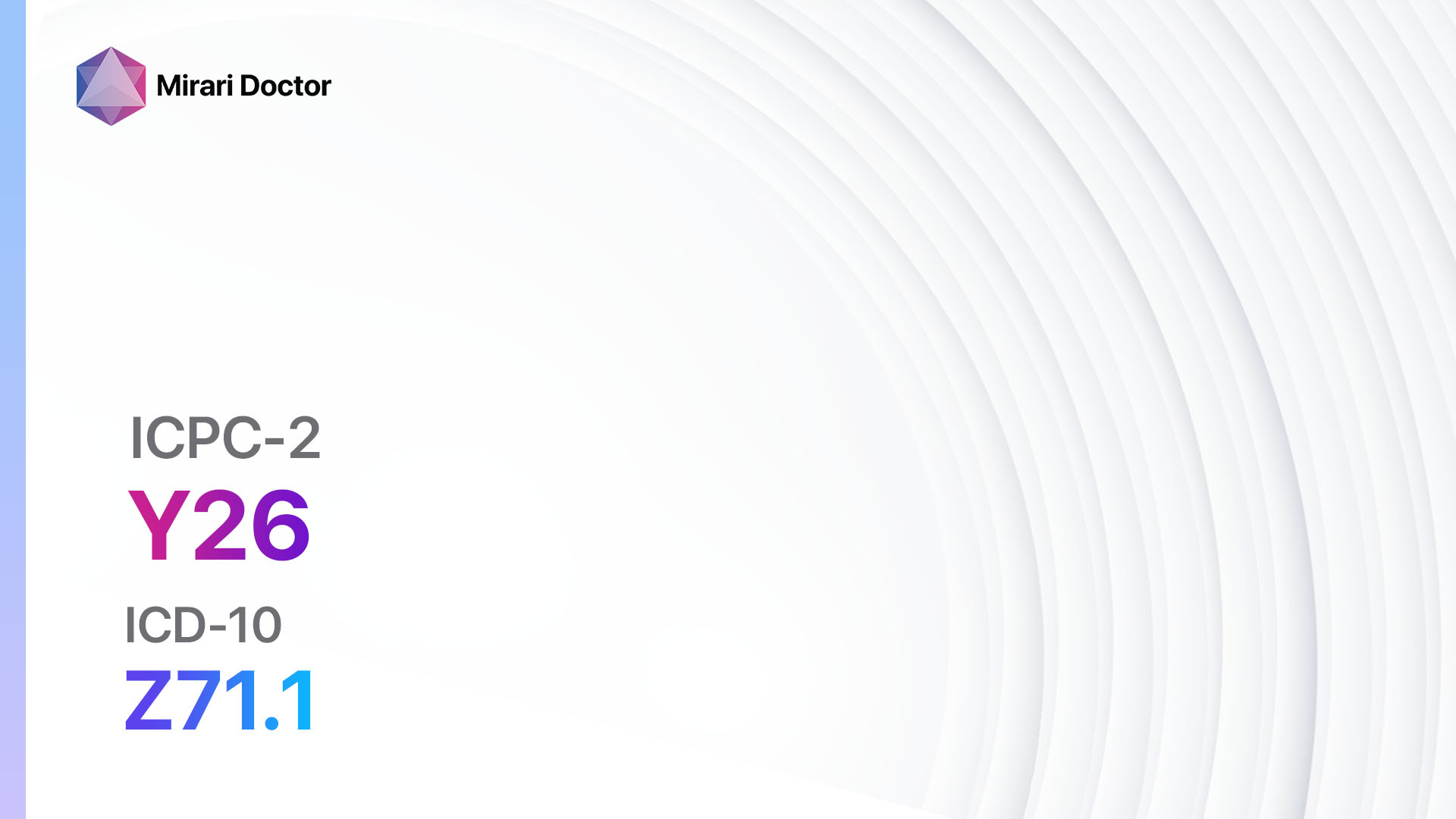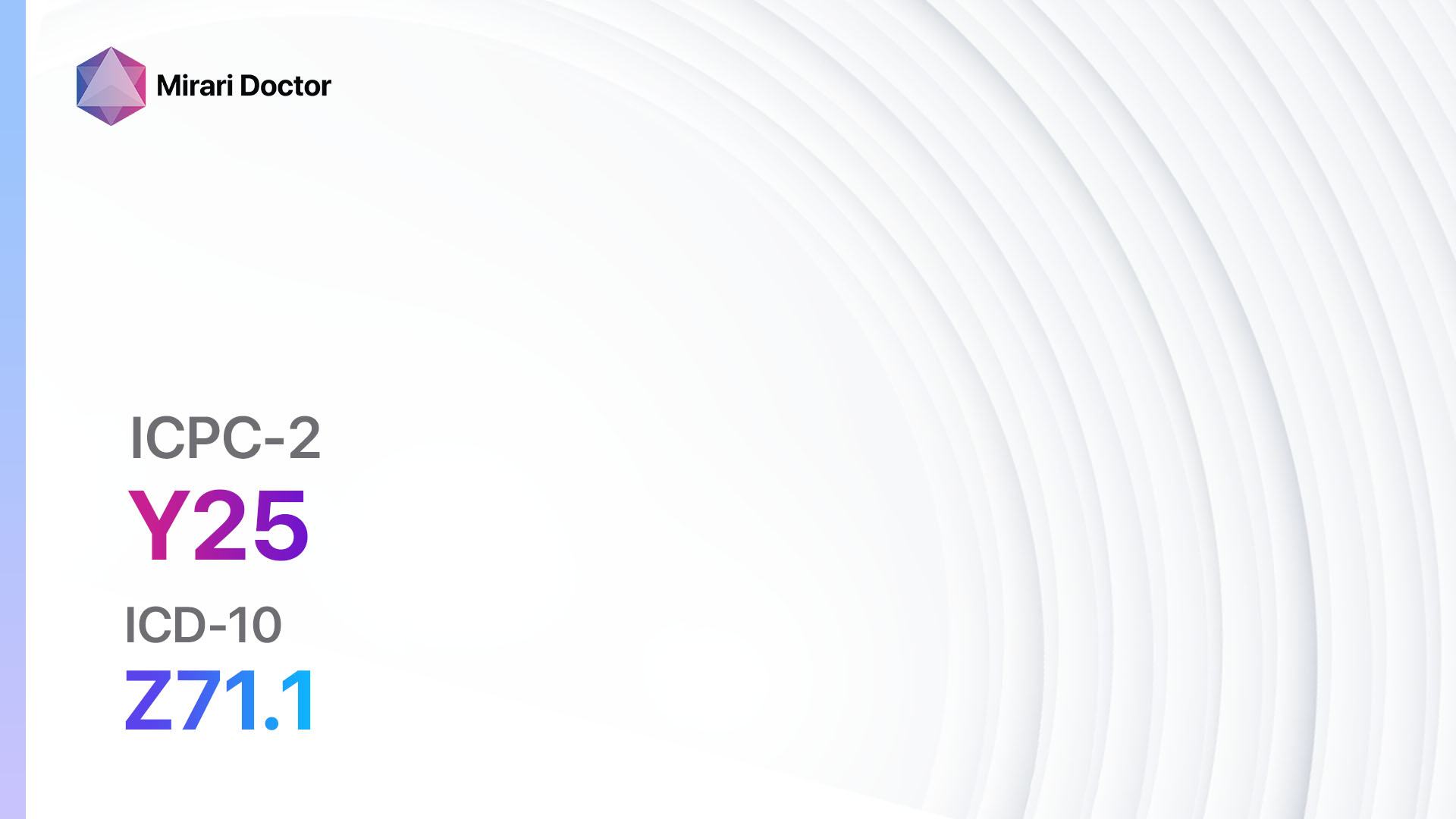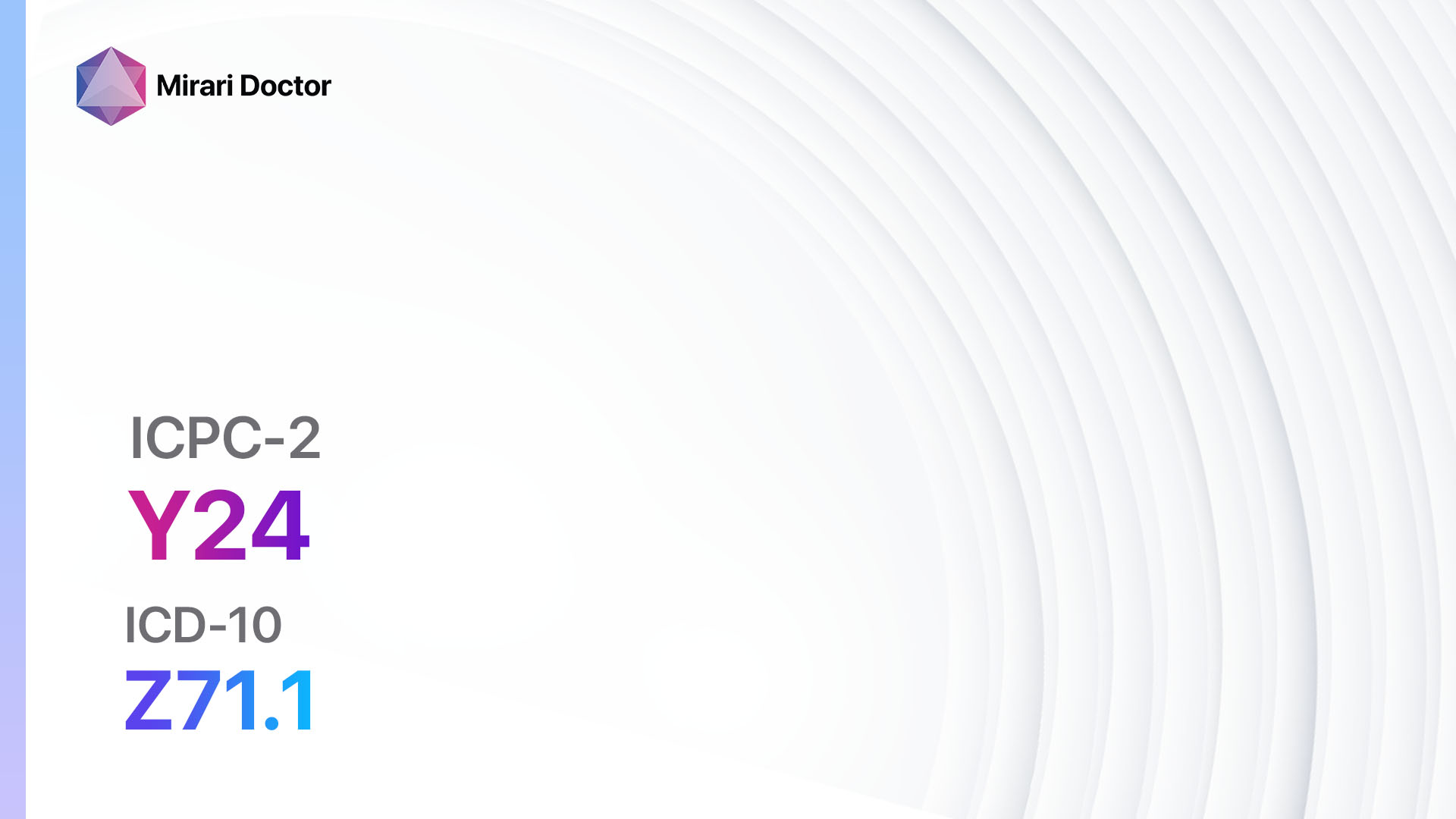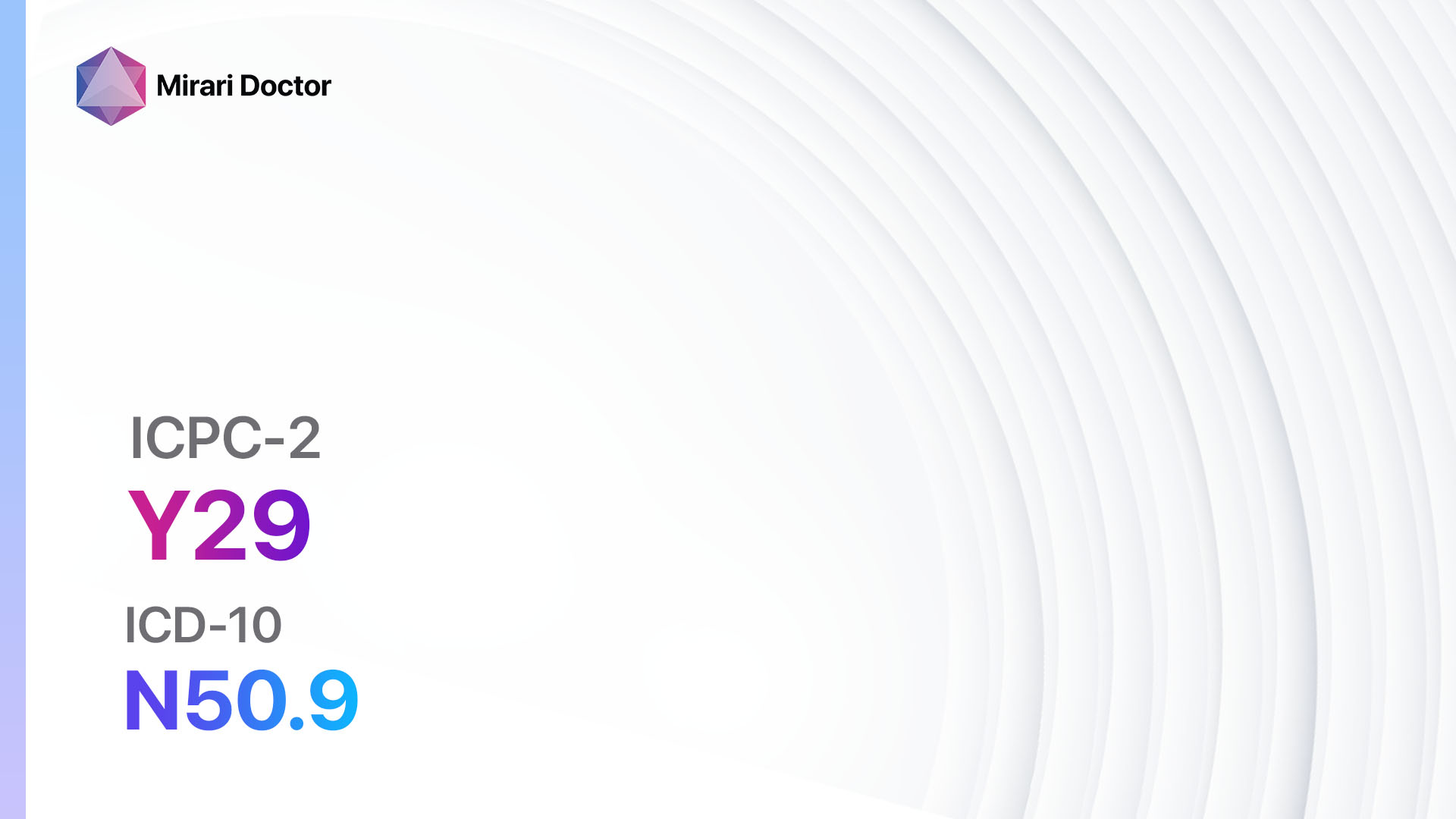
Introduction
Genital symptoms and complaints in males encompass a wide range of conditions that can affect the reproductive system. These symptoms may include pain, itching, discharge, swelling, or changes in the appearance of the genital area. It is crucial to diagnose and treat these symptoms promptly to prevent complications and ensure the overall well-being of the patient.[1]
The aim of this guide is to provide a comprehensive overview of the diagnostic steps, possible interventions, and lifestyle changes that can be considered for males presenting with genital symptoms or complaints.
Codes
- ICPC-2 Code: Y29 Genital symptom/complaint male other
- ICD-10 Code: N50.9 Disorder of male genital organs, unspecified
Symptoms
- Pain in the genital area: This can be sharp, dull, or throbbing and may be associated with swelling or redness.[2]
- Itching or irritation: Persistent itching or a burning sensation in the genital region.
- Discharge: Unusual discharge from the penis, which may be clear, white, yellow, or green.[3]
- Changes in appearance: Any visible changes in the genital area, such as sores, blisters, or rashes.
- Difficulty urinating: Pain or discomfort during urination or changes in urinary patterns.
- Erectile dysfunction: Inability to achieve or maintain an erection.
- Testicular abnormalities: Swelling, lumps, or pain in the testicles.
- Foul odor: Unpleasant odor emanating from the genital area.
Causes
- Infections: Bacterial, viral, or fungal infections can cause genital symptoms. Common infections include:
- Urinary tract infections
- Sexually transmitted infections (STIs) like gonorrhea, chlamydia, syphilis, or herpes[4]
- Yeast infections
- Inflammation: Inflammatory conditions such as balanitis (inflammation of the glans penis) or epididymitis (inflammation of the epididymis) can lead to genital symptoms[5].
- Injury or trauma: Any injury or trauma to the genital area can cause pain, swelling, or changes in appearance.
- Allergic reactions: Allergies to certain substances, such as latex or chemical irritants, can result in itching, redness, or swelling in the genital region.
- Hormonal imbalances: Fluctuations in hormone levels can affect sexual function and lead to symptoms such as erectile dysfunction[6].
- Structural abnormalities: Congenital or acquired structural abnormalities of the genital organs may cause symptoms or complaints.
- Psychological factors: Stress, anxiety, or depression can impact sexual health and contribute to genital symptoms.
Diagnostic Steps
Medical History
A comprehensive medical history should be obtained to gather relevant information about the patient’s symptoms, risk factors, medical conditions, and sexual history. Key points to consider include:
- Duration and progression of symptoms
- Previous episodes or similar symptoms
- Sexual history, including recent partners and unprotected sexual activity
- History of recent urinary tract infections or other infections
- History of allergies or contact with potential irritants
- Use of medications or substances that can affect sexual function
- Presence of any underlying medical conditions[7]
Physical Examination
A thorough physical examination should be performed, focusing on specific signs or findings indicative of disease. The examination may include:
- Inspection of the genital area for any visible changes, such as lesions, ulcers, or rashes
- Palpation of the testicles for lumps, swelling, or tenderness
- Evaluation of the penis and urethral opening for discharge or signs of inflammation
- Assessment of lymph nodes in the groin for enlargement or tenderness
- Examination of the abdomen and lower back for any signs of referred pain or abnormalities[8]
Laboratory Tests
Laboratory tests can provide valuable information for diagnosing the underlying cause of genital symptoms. The following tests may be considered:
- Urinalysis: To detect the presence of infection or inflammation in the urinary tract.
- Blood tests: To assess for markers of infection, inflammation, or hormonal imbalances.
- Sexually transmitted infection (STI) tests: Depending on the patient’s sexual history and symptoms, tests for common STIs such as gonorrhea, chlamydia, syphilis, or herpes may be necessary.
- Cultures or smears: Swabs or samples may be taken from the affected area to identify specific pathogens or determine the presence of abnormal cells.[9]
Diagnostic Imaging
In some cases, diagnostic imaging may be required to visualize and assess the genital region. The following imaging modalities may be used:
- Ultrasound: To evaluate the structure and function of the testicles, prostate, or other pelvic organs.
- CT scan or MRI: These imaging techniques provide detailed cross-sectional images and can help identify any structural abnormalities or masses.
- X-rays: X-rays may be used to assess the structure and integrity of the bony pelvis.[10]
Other Tests
Additional diagnostic tests may be necessary based on the clinical presentation. These tests may include:
- Biopsy: If there are suspicious or abnormal growths in the genital area, a biopsy may be performed to obtain a tissue sample for further analysis.
- Urodynamic studies: These tests assess the function and coordination of the urinary system and may be indicated if there are urinary symptoms or suspected neurogenic causes.
- Cystoscopy: A thin, flexible tube with a camera is inserted into the urethra to visualize the urinary tract and identify any abnormalities.
Follow-up and Patient Education
After the diagnostic steps have been completed, it is important to provide appropriate follow-up and patient education. This may include:
- Reviewing the results of laboratory tests and imaging studies with the patient
- Discussing the diagnosis and treatment options in detail
- Addressing any concerns or questions the patient may have
- Providing information on preventive measures and safe sexual practices
- Scheduling follow-up appointments to monitor progress and adjust treatment as needed
Possible Interventions
Traditional Interventions
Medications:
Top 5 drugs for genital symptoms/complaints in males:
- Antibiotics (e.g., Ciprofloxacin, Azithromycin):
- Cost: Generic versions can range from $10 to $50 for a full course of treatment.
- Contraindications: Known allergies to the medication or related antibiotics.
- Side effects: Nausea, diarrhea, headache.
- Severe side effects: Tendon rupture, allergic reactions.
- Drug interactions: Antacids, warfarin, certain antiarrhythmics.
- Warning: Finish the full course of antibiotics as prescribed to ensure effective treatment.
- Antifungals (e.g., Fluconazole, Clotrimazole):
- Cost: Generic versions can range from $10 to $30 for a full course of treatment.
- Contraindications: Known allergies to the medication or related antifungals.
- Side effects: Nausea, abdominal pain, rash.
- Severe side effects: Liver toxicity, allergic reactions.
- Drug interactions: Certain anticoagulants, statins, or antiepileptic drugs.
- Warning: Use as directed and complete the full course of treatment to prevent recurrence.
- Topical corticosteroids (e.g., Hydrocortisone):
- Cost: Generic versions can range from $5 to $15 per tube.
- Contraindications: Known allergies to the medication or related corticosteroids.
- Side effects: Skin thinning, burning or stinging sensation, rash.
- Severe side effects: Adrenal suppression, allergic reactions.
- Drug interactions: None reported.
- Warning: Use sparingly and as directed, as overuse can lead to skin atrophy or other complications.
- Pain relievers (e.g., Acetaminophen, Ibuprofen):
- Cost: Generic versions can range from $3 to $10 per bottle.
- Contraindications: Known allergies to the medication or related nonsteroidal anti-inflammatory drugs (NSAIDs).
- Side effects: Upset stomach, headache, dizziness.
- Severe side effects: Gastrointestinal bleeding, kidney problems.
- Drug interactions: Anticoagulants, certain antihypertensives.
- Warning: Follow recommended dosages and avoid long-term use without medical supervision.
- Hormonal therapy (e.g., Testosterone replacement):
- Cost: Cost varies depending on the specific medication and delivery method. Generic versions can range from $20 to $100 per month.
- Contraindications: Prostate or breast cancer, severe heart or liver disease.
- Side effects: Acne, fluid retention, mood changes.
- Severe side effects: Increased risk of heart disease, blood clots.
- Drug interactions: Insulin, certain anticoagulants, or corticosteroids.
- Warning: Requires close monitoring and regular follow-up with a healthcare provider.
Alternative Drugs:
- Antivirals (e.g., Valacyclovir): Used for the treatment of viral infections such as herpes.
- Antihistamines (e.g., Loratadine): Can help alleviate itching and allergic reactions.
- Immunosuppressive drugs (e.g., Tacrolimus): Useful in certain autoimmune or inflammatory conditions.
- Alpha-blockers (e.g., Tamsulosin): Can help relieve symptoms associated with prostatic hyperplasia.
- Antidepressants (e.g., Sertraline): May be prescribed if psychological factors contribute to symptoms.
Surgical Procedures:
- Circumcision: Surgical removal of the foreskin. Cost: $1,500 to $3,000.
- Hydrocelectomy: Surgical removal of a hydrocele (fluid-filled sac around the testicle). Cost: $3,000 to $6,000.
- Varicocele repair: Surgical ligation of the veins in the scrotum. Cost: $4,000 to $8,000.
Alternative Interventions
It is important to note that alternative interventions may not have strong scientific evidence supporting their effectiveness. However, some patients may find them beneficial. These interventions include:
- Acupuncture: May help relieve pain and improve overall well-being. Cost: $60 to $120 per session.
- Herbal supplements: Certain herbal supplements, such as saw palmetto or ginseng, may have potential benefits for specific conditions. Cost: Varies depending on the specific supplement.
- Yoga or meditation: Can help reduce stress and promote relaxation. Cost: $10 to $20 per class or free online resources.
- Dietary changes: A healthy diet rich in fruits, vegetables, and whole grains may improve overall health and well-being. Cost: Varies depending on individual food choices.
- Stress management techniques: Techniques such as deep breathing exercises, mindfulness, or counseling can help manage stress and improve symptoms. Cost: Varies depending on the specific approach or therapy.
Lifestyle Interventions
- Good genital hygiene: Regular washing and proper cleaning of the genital area can help prevent infections and maintain overall genital health. Cost: Minimal.
- Safe sexual practices: Using condoms, practicing monogamy, and getting regular STI screenings can help reduce the risk of infections and associated symptoms. Cost: Minimal.
- Healthy lifestyle choices: Maintaining a healthy weight, exercising regularly, and avoiding smoking or excessive alcohol consumption can contribute to overall well-being and sexual health. Cost: Varies depending on individual choices.
- Stress reduction: Engaging in stress-reducing activities such as exercise, hobbies, or relaxation techniques can help improve symptoms associated with stress-related genital symptoms. Cost: Minimal to none.
- Avoiding irritants: Identifying and avoiding potential irritants such as harsh soaps, perfumed products, or allergens can help reduce symptoms of itching or irritation. Cost: Minimal.
It is important to note that the cost ranges provided are approximate and may vary depending on the location and availability of the interventions. Healthcare professionals should consider the patient’s individual circumstances when recommending interventions and discuss any potential risks or benefits.
Mirari Cold Plasma Alternative Intervention
Understanding Mirari Cold Plasma
- Safe and Non-Invasive Treatment: Mirari Cold Plasma is a safe and non-invasive treatment option for various skin conditions. It does not require incisions, minimizing the risk of scarring, bleeding, or tissue damage.
- Efficient Extraction of Foreign Bodies: Mirari Cold Plasma facilitates the removal of foreign bodies from the skin by degrading and dissociating organic matter, allowing easier access and extraction.
- Pain Reduction and Comfort: Mirari Cold Plasma has a local analgesic effect, providing pain relief during the treatment, making it more comfortable for the patient.
- Reduced Risk of Infection: Mirari Cold Plasma has antimicrobial properties, effectively killing bacteria and reducing the risk of infection.
- Accelerated Healing and Minimal Scarring: Mirari Cold Plasma stimulates wound healing and tissue regeneration, reducing healing time and minimizing the formation of scars.
Mirari Cold Plasma Prescription
Video instructions for using Mirari Cold Plasma Device – Y29 Genital symptom/complaint male other (ICD-10:N50.9)
| Mild | Moderate | Severe |
| Mode setting: 1 (Infection) Location: 0 (Localized) Morning: 15 minutes, Evening: 15 minutes |
Mode setting: 1 (Infection) Location: 0 (Localized) Morning: 30 minutes, Lunch: 30 minutes, Evening: 30 minutes |
Mode setting: 1 (Infection) Location: 0 (Localized) Morning: 30 minutes, Lunch: 30 minutes, Evening: 30 minutes |
| Mode setting: 2 (Wound Healing) Location: 0 (Localized) Morning: 15 minutes, Evening: 15 minutes |
Mode setting: 2 (Wound Healing) Location: 0 (Localized) Morning: 30 minutes, Lunch: 30 minutes, Evening: 30 minutes |
Mode setting: 2 (Wound Healing) Location: 0 (Localized) Morning: 30 minutes, Lunch: 30 minutes, Evening: 30 minutes |
| Mode setting: 5 (Prostatitis Therapy) Location: 2 (Prostate & Uterus) Morning: 15 minutes, Evening: 15 minutes |
Mode setting: 5 (Prostatitis Therapy) Location: 2 (Prostate & Uterus) Morning: 30 minutes, Lunch: 30 minutes, Evening: 30 minutes |
Mode setting: 5 (Prostatitis Therapy) Location: 2 (Prostate & Uterus) Morning: 30 minutes, Lunch: 30 minutes, Evening: 30 minutes |
| Mode setting: 7 (Immunotherapy) Location: 1 (Sacrum) Morning: 15 minutes, Evening: 15 minutes |
Mode setting: 7 (Immunotherapy) Location: 1 (Sacrum) Morning: 30 minutes, Lunch: 30 minutes, Evening: 30 minutes |
Mode setting: 7 (Immunotherapy) Location: 1 (Sacrum) Morning: 30 minutes, Lunch: 30 minutes, Evening: 30 minutes |
| Total Morning: 60 minutes approx. $10 USD, Evening: 60 minutes approx. $10 USD |
Total Morning: 120 minutes approx. $20 USD, Lunch: 120 minutes approx. $20 USD, Evening: 120 minutes approx. $20 USD, |
Total Morning: 120 minutes approx. $20 USD, Lunch: 120 minutes approx. $20 USD, Evening: 120 minutes approx. $20 USD, |
| Usual treatment for 7-60 days approx. $140 USD – $1200 USD | Usual treatment for 6-8 weeks approx. $2,520 USD – $3,360 USD |
Usual treatment for 3-6 months approx. $5,400 USD – $10,800 USD
|
 |
|
Use the Mirari Cold Plasma device to treat Genital sympt./complt.male other effectively.
WARNING: MIRARI COLD PLASMA IS DESIGNED FOR THE HUMAN BODY WITHOUT ANY ARTIFICIAL OR THIRD PARTY PRODUCTS. USE OF OTHER PRODUCTS IN COMBINATION WITH MIRARI COLD PLASMA MAY CAUSE UNPREDICTABLE EFFECTS, HARM OR INJURY. PLEASE CONSULT A MEDICAL PROFESSIONAL BEFORE COMBINING ANY OTHER PRODUCTS WITH USE OF MIRARI.
Step 1: Cleanse the Skin
- Start by cleaning the affected area of the skin with a gentle cleanser or mild soap and water. Gently pat the area dry with a clean towel.
Step 2: Prepare the Mirari Cold Plasma device
- Ensure that the Mirari Cold Plasma device is fully charged or has fresh batteries as per the manufacturer’s instructions. Make sure the device is clean and in good working condition.
- Switch on the Mirari device using the power button or by following the specific instructions provided with the device.
- Some Mirari devices may have adjustable settings for intensity or treatment duration. Follow the manufacturer’s instructions to select the appropriate settings based on your needs and the recommended guidelines.
Step 3: Apply the Device
- Place the Mirari device in direct contact with the affected area of the skin. Gently glide or hold the device over the skin surface, ensuring even coverage of the area experiencing.
- Slowly move the Mirari device in a circular motion or follow a specific pattern as indicated in the user manual. This helps ensure thorough treatment coverage.
Step 4: Monitor and Assess:
- Keep track of your progress and evaluate the effectiveness of the Mirari device in managing your Genital sympt./complt.male other. If you have any concerns or notice any adverse reactions, consult with your health care professional.
Note
This guide is for informational purposes only and should not replace the advice of a medical professional. Always consult with your healthcare provider or a qualified medical professional for personal advice, diagnosis, or treatment. Do not solely rely on the information presented here for decisions about your health. Use of this information is at your own risk. The authors of this guide, nor any associated entities or platforms, are not responsible for any potential adverse effects or outcomes based on the content.
Mirari Cold Plasma System Disclaimer
- Purpose: The Mirari Cold Plasma System is a Class 2 medical device designed for use by trained healthcare professionals. It is registered for use in Thailand and Vietnam. It is not intended for use outside of these locations.
- Informational Use: The content and information provided with the device are for educational and informational purposes only. They are not a substitute for professional medical advice or care.
- Variable Outcomes: While the device is approved for specific uses, individual outcomes can differ. We do not assert or guarantee specific medical outcomes.
- Consultation: Prior to utilizing the device or making decisions based on its content, it is essential to consult with a Certified Mirari Tele-Therapist and your medical healthcare provider regarding specific protocols.
- Liability: By using this device, users are acknowledging and accepting all potential risks. Neither the manufacturer nor the distributor will be held accountable for any adverse reactions, injuries, or damages stemming from its use.
- Geographical Availability: This device has received approval for designated purposes by the Thai and Vietnam FDA. As of now, outside of Thailand and Vietnam, the Mirari Cold Plasma System is not available for purchase or use.
References
- Workowski KA, Bolan GA. Sexually transmitted diseases treatment guidelines, 2015. MMWR Recomm Rep. 2015;64(RR-03):1-137.
- Trojian TH, Lishnak TS, Heiman D. Epididymitis and orchitis: an overview. Am Fam Physician. 2009;79(7):583-587.
- Brill JR. Diagnosis and treatment of urethritis in men. Am Fam Physician. 2010;81(7):873-878.
- Centers for Disease Control and Prevention. Sexually Transmitted Diseases (STDs). Updated April 13, 2021.
- Edwards S. Balanitis and balanoposthitis: a review. Genitourin Med. 1996;72(3):155-159.
- Seftel AD. Male hypogonadism. Part I: Epidemiology of hypogonadism. Int J Impot Res. 2006;18(2):115-120.
- Coker TJ, Dierfeldt DM. Acute bacterial prostatitis: diagnosis and management. Am Fam Physician. 2016;93(2):114-120.
- Wein AJ, Kavoussi LR, Partin AW, Peters CA. Campbell-Walsh Urology. 11th ed. Philadelphia, PA: Elsevier; 2016.
- Papp JR, Schachter J, Gaydos CA, Van Der Pol B. Recommendations for the laboratory-based detection of Chlamydia trachomatis and Neisseria gonorrhoeae – 2014. MMWR Recomm Rep. 2014;63(RR-02):1-19.
- Dogra VS, Gottlieb RH, Oka M, Rubens DJ. Sonography of the scrotum. Radiology. 2003;227(1):18-36.
Related articles
Made in USA

